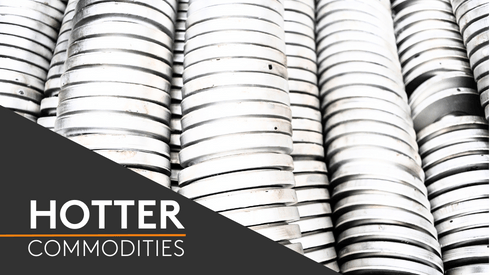But market sources believed that this recovery was approaching its end and may not be sustained through the second quarter, Fastmarkets heard on Tuesday May 7.
Indeed, some prices have already started to falter.
For example, the midpoint of Fastmarkets’ assessment of the price range for nickel sulfate, min 21%, max 22.5%; cobalt 10ppm max, exw China, averaged 29,375 yuan ($4,072) per tonne in April this year. This was up by 15.2% from an average of 25,500 yuan per tonne in December 2023, but down by 0.25% from an average of 29,450 yuan per tonne in March 2024.
Similarly, the corresponding monthly average of Fastmarkets’ price assessment for cobalt sulfate, 20.5% Co basis, exw China, showed a year-to-date peak at 32,861 yuan per tonne in March, up by 3.7% from 31,694 yuan per tonne in December 2023. But the gain was not sustained, falling back by 3.42% month on month to 31,736 yuan per tonne in April.
A veteran trader of battery metals dismissed the idea that the restocking activity seen in the first three months of the year had been driven by a robust increase in downstream demand. “The demand is more like it was brought forward from the second quarter, and it is now at the peaking stage,” he said.
The trader added that the pick-up in demand would probably falter soon.
Market sources said that typically there is more buying activity in the battery raw materials market late in May and in June for seasonal reasons, but this year consumption over the first quarter had already reached a level normally seen in the peak season. This led them to say that demand was brought forward from the second quarter, and eventually will go “back to normality.”
“The restocking activity just caught us by surprise, but this will not always be the case and eventually it will be back to normality,” a producer source said, noting that cathode and battery makers already had reduced order books for the coming months.
The growth of demand in China, particularly for ternary battery materials, slowed following the country’s discontinuation of a subsidy program at the end of 2022, but the recently improved sentiment gave evidence of downstream market share.
The lithium-ion phosphate (LFP) chemistry, long favored in the Chinese market because of its price and safety competitiveness, had increased in market share over the past year, but that trend was reversed in the first quarter of 2024.
In that quarter, the market share taken by nickel cobalt manganese (NCM) battery materials rose by 1.8% to 36.7%. Meanwhile, the size of the LFP battery market contracted by 2% to 63%, according to data from research firm Gaogong Industry Institute (GGII).
Patchy recovery
A combination of factors has contributed to driving the patchy recovery in the battery sector, with some cathode makers heard to be operating at full capacity while others had lukewarm order books, according to industry sources.
“It really differs from producer to producer,” an industry source, who had just paid visits to downstream plants, said. “I heard that one cathode producer almost reached full capacity in March, but this was apparently not the case for everyone.”
Market sources attributed this to the release of a couple of new car models, with vehicles from automakers such as Xiaomi, Huawei and Li Auto heard to be popular. Upstream producers which were sourcing to certain car manufacturers would thus have seen a boost in their order books.
“So, it’s really up to which downstream customer you are sourcing,” the industry source added.
Alongside the new-car boom, weakness stemming from futures contracts and a price war among automakers has also gone some way to spurring buying appetite, market sources told Fastmarkets.
The benchmark London Metal Exchange nickel three-month official price went down by as much as 45% last year, closing at $16,560 per tonne on December 29. But it has recouped those losses this year, going from a low at $16,795 per tonne on January 2 to rise steadily to $18,937 per tonne on May 3.
Meanwhile, a renewed price war among automakers in China since the start of the year has pushed prices for electric vehicles (EVs) below those for cars with internal combustion engines. A sharp price cut has gone some way to encouraging dip-buying, which trickled down to the feedstock market, sector sources said.
Overhanging bearishness
Still, however, bearish sentiment persists and was believed to be overpowering any short-term drivers, with a projected surplus casting a shadow over the battery raw materials market.
“With no fundamental change in downstream consumption, all of the drivers are bound to be short-lived,” another industry source said.
The nickel market was still facing forecast annual surpluses of 47,000 tonnes in 2024 and 86,000 tonnes in 2025, although these figures were much reduced from the surpluses of 194,000 tonnes and 118,000 tonnes respectively that were previously forecast, according to Fastmarkets’ research.
“The battery producers could run at full operating rates in May to continue the trend, which rarely happens,” a source with a battery recycling producer in China said. “But otherwise, I don’t think it possible for the momentum to carry on in the second quarter.”
Want to hear more insights on this market? Subscribe to Fast Forward, your definitive podcast for the critical minerals and battery raw materials markets, today. Your host, Andrea Hotter, will address burning topics in the critical minerals market including the latest trends, market buzz and game-changing technologies that are shaking up the sector. Find out more here or subscribe on Spotify, Apple Podcasts, Amazon Music or wherever you get your podcasts to get the latest episodes when they are released.





